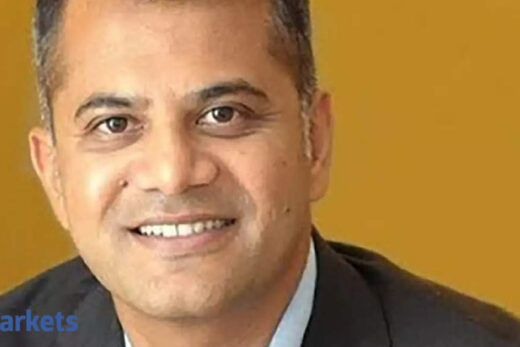You had guided for high cost iron ore inventory in the second quarter and the impact can be seen in your earnings. Would lower prices of iron ore get impacted in the third quarter?
Globally iron ore prices got corrected downwards after peaking close to $230 plus per tonne. It came down to $120 and even below that which amounts to almost 50% correction in iron ore price globally. Whereas in India, in the quarter just ended, the price correction was very marginal. Even I consider that the corrections made in October are not in line with what is happening globally as regards iron ore. Therefore the benefit of lower iron ore costs did not accrue to Indian steel companies because of very high iron ore cost to the industry. Those prices are not coming down.
Coking coal prices have gone up sharply. Will that negate the benefit of iron ore prices coming down?
That is what I was trying to explain. In this quarter, globally iron ore prices have come down because of the policies followed by China where their demand and production has come down. So the demand for iron ore has come down from China. The immediate impact was a steep fall in global iron ore prices which did not get reflected in Indian iron ore prices.
Therefore the Indian steel industry in the last quarter still continued to suffer high iron ore prices. Over and above that, the energy shortages also pushed up energy related commodity prices. Thermal coal, oil, all the prices have gone up and that is why the coking coal price went up from $120-$130 to $400 per tonne. Therefore along with severe cost pressure and high iron ore prices in India and very high coking coal prices globally, over and above the other costs have gone up. That is why there was a severe cost pressure for the Indian steel industry in the last quarter.
Where do you see EBITDA going forward?
If I look at it sequentially, in the last quarter there was a drop in margin per tonne because of the reasons which I just explained. The cost pressure was very severe and at the same time, the second quarter generally is sluggish in India due to monsoon Indian. That is why a lot of exports were to be made in the last quarter. Last quarter, there was a pressure on EBITDA per tonne. But amount-wise, we have made more EBITDA — Rs 10,417 crore — in the last quarter compared to the sequential quarter of Rs 10,274 crore.
Going forward, if you ask me what is required to be done, the coking coal prices have gone up so much that it is very difficult for steel companies to absorb. We may also have to think passing on some energy surcharge to the customers. As and when the prices come down, customers will benefit. If prices go up further as has happened for the last few weeks, then we may have to pass it on to the customers. That is how we are looking at it as far as the overall price scenario is concerned.
Do you see prices going higher because input costs have gone up but on the other hand, it has to be viable for the consumers. Are you in a position to increase prices more?
One has to look at steel demand region wise, not globally. You must have seen the recent shuttering outlook that has been given by WSA. They said that in CY2021, steel demand will grow by 4.5%. If we break up that 4.5%, it is minus 1% in China and the rest of the world will grow over 11.5%. That is the kind of outlook which has been given. So region wise the dynamics are different.
In China, starting from July, month after month the demand has come down. In July, China demand fell 13%. In August, it fell 18% and 23% in September. But for the rest of the world, demand is reasonably strong. At the same time, in the Indian scenario, last quarter saw subdued demand but now we are seeing an uptick in the overall pick up in the overall Indian Steel demand.
We expect the second half to be much better than in the first half.
All the brokerage firms including JP Morgan are saying that maybe margins have peaked and so during this good run, we have seen that the Indian domestic companies pay back their debt smartly. What is the health of the Indian steel companies? Will we see another capex cycle boom?
The Indian steel industry is very competitive and that is why we are exporting large quantities of steel to the global markets. The Indian steel industry has been identified as one of the champion industries, not only to meet the ongoing domestic demand but also to meet the export demand that is being vacated by other countries like China or Russia.
There is a huge amount of scope for the Indian steel industry to create capacities in India to leverage this opportunity to export and also to meet domestic demand. That is why Indian steel companies, particularly integrated steel plants, are announcing plans for increasing capacity. JSW Steel is at the forefront. We are running capex programme of Rs 48,000 crore.
We are running the largest five million tonne Brownfield expansion. It is the first time in India that such a large expansion is getting completed. It has the largest blast furnace and also the melt shaft with 350 tonnes capacity. This was commissioned on October 19, 2021. So, there will be a huge amount of volume growth that will also come from the expansion of our Dolvi unit. That is why companies really wanted to take this opportunity of a very favourable cycle and we are very very confident that demand will pick up further in India and also globally because energy transition type of investments would stimulate steel demand.
What has been the impact of energy crisis on the steel sector?
As far as the energy shortages are concerned either in terms of power availability or any of the other energy related material not being available, it will definitely have an impact but it is not a very long-term problem. It can be addressed.
Similarly, for the auto sector which is suffering from chip shortage, that will also get corrected in a few months. All these problems are very temporary in my view.
Where are we in terms of the steel cycle?
We are definitely seeing a lot of positives as far as this cycle is concerned. Structurally a lot of changes have happened post Covid. Covid could be one of the triggers for the changes. One is the energy transition which we have been talking about and the focus of the government to spend more and more on the infrastructure is also one of the biggest drivers for the steel demand.
So even in the first six months of this year, we have consumed 49 million tons of steel as against 35 million tons in the previous year. So, almost 14-15 million ton of extra steel has been consumed in the first six months of the year. It is going to accelerate further in the next six months. We will have nearly 110 million tons of steel consumption in this financial year as against 94 million tons in the previous year. Therefore, companies are spending on technology to ensure that we will be producing less carbon intensive steel and also green steel.
A lot of efforts are being made by companies, particularly JSW Steel. We have committed to reduce carbon emissions to 1.95 by 2030 and based on that commitment, we could raise $500 million sustainability linked bonds for the first time globally from the steel industry.



